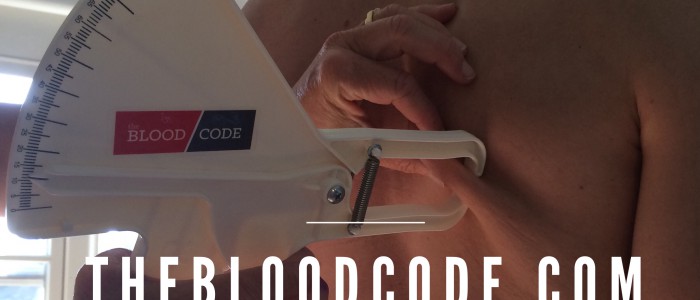Richard Maurer, ND
Sully, a 58-year-old adventurous and healthy man, shared his confusion with me at our first visit. His primary care doctor recommended a statin, on top of his current aspirin and beta-blocker, because of his heart disease risk and cholesterol. But Sully stated, “I feel better than ever – energetic and strong. The blood test results can’t be the whole story.”
Sully exercised regularly, skied often, played racquet sports year-round. He felt good. I personally identify with Sully: I entered my 40s as a runner and bicyclist, but had prediabetic blood sugar and a low-normal HDL-C despite my activity. I had to work to remake my habits and develop a more accurate understanding of what indicates a truly healthy metabolism and subsequent disease-free future. When I reviewed Sully’s family history, we realized his higher-than-normal risk for cardiometabolic problems. His mother and father both had a history heart attacks.
Sully has always been a “big guy” – an endearing term that engenders sweet loyal friendship – and if you saw a picture of him you would think he was “strong and fit.” But beware of profiling; even experienced clinicians are often deceived. We clinicians need a better way to see our clients, and ourselves.
Skin-fold measurements on different parts of the body display the results of one’s metabolism – where and how much is stored in different parts of the body. A few simple in-office caliper measurements help predict the personalized dietary and fitness habits that provide meaningful health and disease prevention.
SKIN-FOLD CALIPERS VS BMI
Skin-fold calipers are a far more accurate method to assess your health status than body mass index (BMI). BMI is a simple calculation of total weight compared to your height. But weight measured on a scale does not discern the specific parts of your body – fat, muscle, bone, or brain. And even with BMI’s lack of discernment, the very calculation is often wrong. New York Times journalist, Jane Brody, summarized a 2010 study on BMI accuracy, stating that BMI misclassified people 41% of the time.1
SKIN-FOLD CALIPERS VS THAT COOL ELECTRONIC GADGET
Bioelectric impedance analyzers (BIA) are consumer-priced devices that either stand alone or are integrated into common bathroom scales. These devices measure skin resistance and have substantial variability depending upon hydration, gender, race, etc. More importantly, these methods do not compare and contrast different locations on your body. Simply, electronic devices do not show you where the fat is.
Comparative studies have shown that skin-fold calipers in the hands of a practiced individual are as accurate as the most expensive BIA devices.2 Inexpensive calipers offer the practitioner a method to accurately identify the location of a man’s body fat and track progress from exercise and diet changes.
BACK TO SULLY
Sully’s conventional doctor was concerned about his heart disease risk and recommended a life-long statin – a drug that is now taken by over 27% of adults in the United States over 45 years old.3 And men over 65 years of age are 13% more likely to take a statin than women.4 The side effects of statins comprise a growing list of conditions, including depression, pain, memory loss, lowered testosterone, and high blood sugar.
I do not want this article to turn into a statin debate. I therefore forward the interested reader to John Abramson’s article reviewing the lack of evidence to support statin medication for primary prevention of heart attack and stroke.5
As I reach age 50, and as Sully approaches 60, I am compelled to use a better metric than mere blood tests to steer us men toward better health and prevention of disease. I have written extensively on the use of blood tests to measure our metabolic health and recovery. But what about when the person is right in the office? Like taking a pulse, skin-fold measurements using a caliper provide a right here/right now marker of progress from 1 visit to the next.
HOW TO USE A SIMPLE SKIN-FOLD CALIPER
In my practice, I use a very inexpensive skin-fold caliper (I long ago stopped using my $250 professional caliper, preferring the easier-to-read, big plastic one) to measure 4 points on the body: triceps, biceps, back, and hip. Using the sum of the measurements and a conversion chart based upon Durnin and Womersley data,6 I calculate overall body fat percentage.* But even before calculations are made, the absolute numbers tell a story.
On men, a skin-fold caliper measurement, in millimeters, at the posterior line on the mid-triceps should be the same thickness as that found above the hip – the fold of skin taken immediately above the iliac crest in the anterior axillary line. And if a man maintains great posture and core fitness, the back – measured just below the mid-scapula – a veritable love handle, at 45 degrees – will also match the thickness of the triceps and hip measurement (Figure 1). For more detail, you might also refer to my brief videotaped tutorial, available on YouTube: https://youtu.be/t50tKhMIFQ4.
The goal for skin-fold measurements: Triceps = Back = Hip (in millimeters)
In my experience, the back is the most difficult part of the body to keep in a balanced lean zone. Swimmers and horseback riders are generally the best conditioned here. But most of us sit too much and are not told to “sit high in the saddle.” So, don’t be surprised if the back measurement is 50% higher than the triceps; what I don’t want to see is the number more than double in men.
Poorly conditioned, fatty arms might be unsightly, but do not link strongly to cardiovascular disease. It’s the intra-abdominal body fat that predicts heart disease, hypertension, and cancer risk.7 However, research often uses CT scans for adiposity data – a lot of radiation to look for something so evident as body fat. Enter skin-fold calipers.
It has been long established that skin-fold caliper measurements strongly correlate to the gold standard of CT scans for abdominal fat distribution.8 The body fat under the skin in a given location of the body represents the quantity and proportion of body fat throughout that “slice,” or cross-section. So, if the highest body fat measurements are recorded in the hip and back regions, it represents higher retro-peritoneal fat content. This suprarenal (above the kidney) fat, any chef knows, renders lovely leaf lard from a pig; however, the consequences for us upright humans include hypertension and a shorter and more symptomatic life.
Sully’s skin-fold caliper measurements are shown in Table 1. By January 2015 he no longer required a beta-blocker for blood pressure control. No surprise, clinically, because lower subcutaneous fat in the hip and back region signifies a reduction in fat deposits above the kidneys, thereby reducing a major trigger for essential hypertension.
Table 1. Patient’s % Body Fat Over Time, As Determined by Caliper
| Date | Aug 2014 | Oct 2014 | Jan 2015 | Aug 2015 |
| Triceps (mm) | 7 | 7 | 7 | 7 |
| Biceps (mm) | 4 | 5 | 4 | 3.5 |
| Back (mm) | 24 | 22 | 20 | 17 |
| Hip (mm) | 16 | 8 | 6 | 8 |
| Total (mm) | 51 | 42 | 37 | 35.5 |
| Total Body Fat % | 22%Wt: 236 lb | 19% | 18% | 17%Wt: 201 lb
(35 lb loss) |
I utilize skin-fold calipers for every person I see in practice. It’s at the top of my objectives, followed by blood pressure, pulse, and heart-rate variability (a future article, perhaps). The motivation gained by this inarguable finding provides a perfect launching platform for the individualized recommendations for dietary and fitness changes.
DON’T FORGET DIET & EXERCISE
Sully’s blood test results are shown in Table 2. You will notice that his TG:HDL ratio improves in accordance with his leaner, healthier fitness. My goal is to reduce his TGs to below 100, lowering the TG:HDL ratio to as close to 1 as possible. But how, you ask?
Table 2. Patient’s Metabolic Markers Over Time
| Date | July 2014 | Oct 2014 | Jan 2015 |
| Total Cholesterol | 207 | 203 | 225 |
| Triglycerides (TG) | 192 | 128 | 107 |
| HDL-C(TG:HDL) | 55(3.5) | 63(2.0) | 69(1.5) |
| Fasting Glucose | 109 | 106 | 101 |
| Insulin | 9.9 | 7.3 | 4.7 |
| HOMA-IR | 2.7 | 1.9 | 1.2 |
(HOMA-IR = homeostatic model assessment for insulin resistance)
Diet and exercise, of course. Sully now eats a higher-fat diet than his conventional medical provider advised – the same office that recommended blood pressure medication and a statin. He now follows a low-carb, high-fat diet in accordance with his insulin resistance. He reduced the time he invested in long-distance aerobic exercise, and instead added 2 days per week of a strenuous circuit of resistance exercise involving more core muscles. Strenuous means that he hits his maximum at about 8 to 10 repetitions of each exercise. This is 80% of 1 repetition maximum (80% of 1 RM, in fitness speak). This type of exercise, unlike sustained aerobic activities like walking or jogging, results in muscle tissue that is more insulin-sensitive – a boon to Sully’s future health and vitality.
With properly guided diet and fitness recommendations utilizing both blood test results and skin-fold caliper measurements, our clients (and we) can realize our healthiest future. Physician, heal thyself? Gladly.
*Note: In my practice and book, I have simplified this chart to represent 40 to 50-year-olds, with instructions to subtract 2% for 20-year-olds and add 2% for 60-year-olds.
 Richard Maurer, ND, has been helping people fully recover from weight problems, hypothyroid symptoms, prediabetic conditions and type 2 diabetes since 1994 in his Portland, Maine, practice. His personal tendency toward type 2 diabetes motivates him to provide truly effective personalized solutions for metabolic health. His 2014 book, The Blood Code: Unlock the Secrets of Your Metabolism, demystifies the meaning of blood test results and skin-fold measurements to reveal the primal diet and fitness needs that lead each of us toward the healthy and long life we deserve. Connect with Dr Maurer at facebook.com/mybloodcode or Twitter: @drrichardmaurer.
Richard Maurer, ND, has been helping people fully recover from weight problems, hypothyroid symptoms, prediabetic conditions and type 2 diabetes since 1994 in his Portland, Maine, practice. His personal tendency toward type 2 diabetes motivates him to provide truly effective personalized solutions for metabolic health. His 2014 book, The Blood Code: Unlock the Secrets of Your Metabolism, demystifies the meaning of blood test results and skin-fold measurements to reveal the primal diet and fitness needs that lead each of us toward the healthy and long life we deserve. Connect with Dr Maurer at facebook.com/mybloodcode or Twitter: @drrichardmaurer.
REFERENCES:
- Brody JE. Weight Index Doesn’t Tell the Whole Truth. 30, 2010. The New York Times. Available at: https://nyti.ms/1BKgRuo. Accessed August 15, 2015.
- Ostojic SM. Estimation of body fat in athletes: skinfolds vs bioelectrical impedance. J Sports Med Phys Fitness. 2006;46(3):442-446.
- Gu Q, Paulose-Ram R, Burt VL, Kit BK. Prescription Cholesterol-lowering Medication Use in Adults aged 40 and Over: United States, 2003–2012. NCHS Data Brief; Number 177, December 2014. CDC Web site. https://www.cdc.gov/nchs/data/databriefs/db177.htm. Accessed August 15, 2015.
- National Center for Health Statistics; CDC. Health, United States, 2010: In Brief. Data table for Figure 17 available at: https://www.cdc.gov/nchs/data/hus/2010/fig17.pdf. Accessed August 15, 2015.
- Abramson J, Wright JM. Are lipid-lowering guidelines evidence-based? Lancet. 2007;369(9557):168-169.
- Durnin JV, Womersley J. Body fat assessed from total body density and its estimation from skinfold thickness: measurements on 481 men and women aged from 16 to 72 years. Br J Nutr. 1974;32(1):77-97. Data chart available at: https://anthropology.ua.edu/bindon/ant476/topics/Bodyfatestimate.pdf.
- Britton KA, Massaro JM, Murabito JM, et al. Body fat distribution, incident cardiovascular disease, cancer, and all-cause mortality. J Am Coll Cardiol. 2013;62(10):921-925.
- Orphanidou C, McCargar L, Birmingham CL, et al. Accuracy of subcutaneous fat measurement: comparison of skinfold calipers, ultrasound, and computed tomography. J Am Diet Assoc. 1994;94(8):855-858.





Comments are closed.